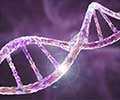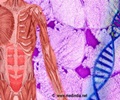A collaborative study on mutations in yeast has yielded significant findings that may help improve scientists understanding of the role evolutionary genetics play in human diseases and cancer.
Scientists may have a better understanding of the role evolutionary genetics plays in human diseases and cancer thanks to a study on genetic mutations in yeast.
Scientists from the University of New Hampshire, Indiana University, Harvard University, and the University of Utah have found that yeast mutates in a distinctly different pattern than other model organisms."In biology, the mutation is an absolutely fundamental process, essential to evolution but also the source of all genetic disease," says Kelley Thomas, associate professor of biochemistry and director of the Hubbard Center for Genome Studies at the University of New Hampshire.
"Despite its importance, we still don't know much about the basic processes of mutation," he adds.
Reporting their findings in Proceedings of the National Academy of Science (PNAS) Online Early Edition this week, the researchers have pointed out that cancers are caused by mutations, as are inherited diseases like Huntington's disease and fragile X syndrome, the most common inherited form of mental retardation.
"If we know more about the patterns of mutation, we'd be able to better understand the origins of these diseases - and maybe prevent them," says Thomas.
The researcher team set out to determine the baseline rate and spectrum of mutation in yeast, and found that, like the previously studied mutations in the nematode C. elegans, the yeast Saccharomyces cerevisiae had a very high rate of mutation from generation to generation.
Advertisement
While C. elegans mutations were largely the result of inserting or deleting base pairs of DNA, yeast's patterns of mutation were characterized by changing one base pair for another.
Advertisement
The researcher adds that the consequences of inserting and deleting base pairs can be much more dramatic than substituting one base pair for another.
"We were surprised that there isn't a common spectrum of mutation. However, it's exciting, because if we can describe patterns of mutation, maybe we can understand why some organisms, including people, are susceptible to certain mutations and not others," says Thomas.
The researchers used a new generation of sequencing technology in their study, which allowed them to sequence the entire genome of each yeast strain, and to identify the rare mutational events that had taken place.
Source-ANI
RAS/L











